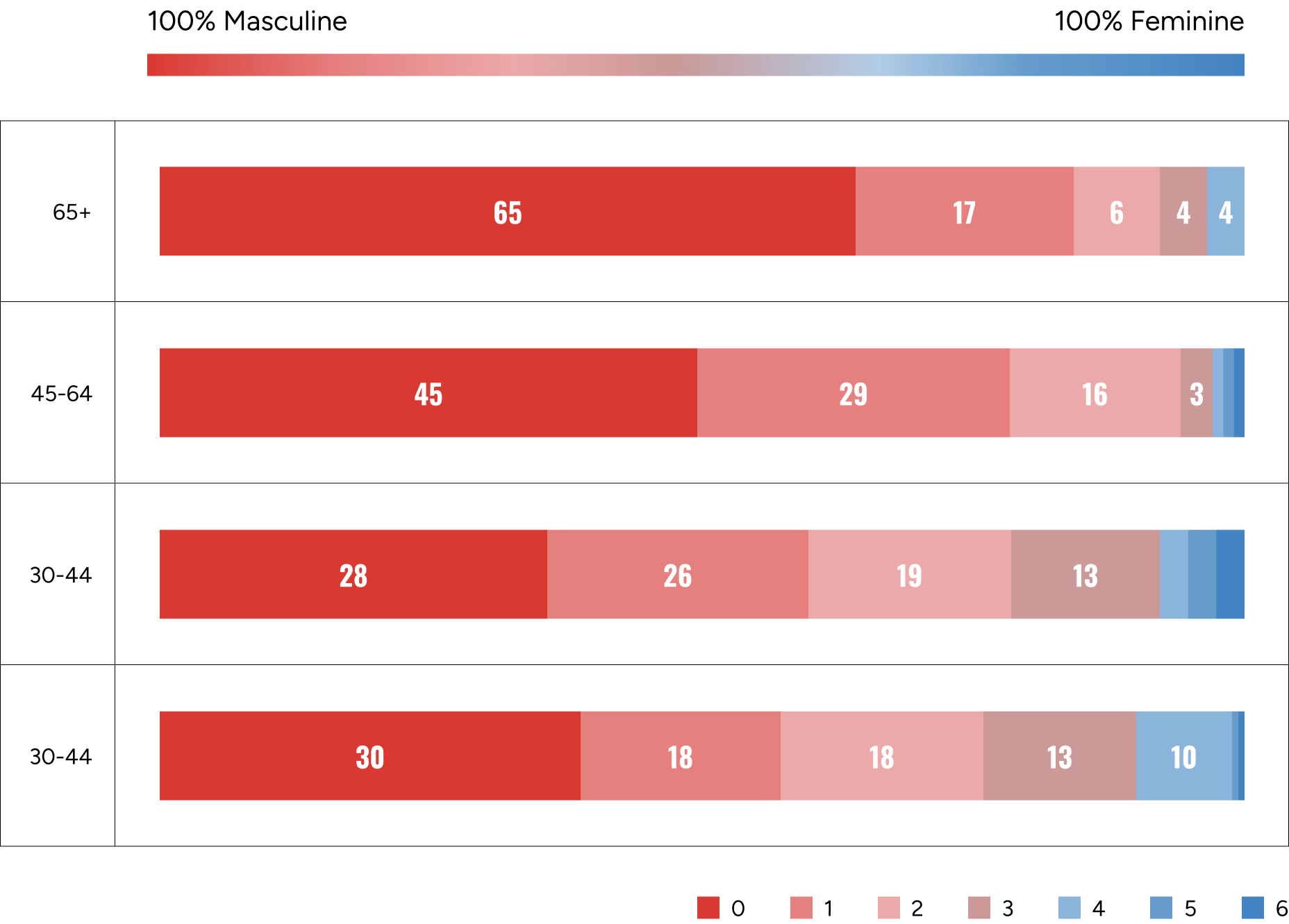What has been happening to testosterone over the years?
Testosterone, sperm count, and overall strength have been in decline for decades. Men today even feel less masculine than their fathers and grandfathers before them.
Stress, fast food, sedentary lifestyles, environmental pollution and other fixtures of modern life have contributed to this rapid decline, taking a toll on men’s vitality, vigor, fertility and well-being.
Testosterone decline YoY
View AbstractTestosterone levels have had a substantial drop in U.S. — since the 1980s.
The average levels of the male hormone dropped by 1 percent a year, Dr. Thomas Travison and colleagues from the New England Research Institutes in Watertown, Massachusetts, found. This means that, for example, a 65-year-old man in 2002 would have testosterone levels 15 percent lower than those of a 65-year-old in 1987. This also means that a greater proportion of men in 2002 would have had below-normal testosterone levels than in 1987.

Fig.1 - Thomas G. Travison, Andre B. Araujo, Amy B. O’Donnell, Varant Kupelian, and John B. McKinlay, A population-level decline in serum testosterone levels in American men, 0021-972X/07/$15.00/0 The Journal of Clinical Endocrinology & Metabolism 92(1):196 –202, 2007
Sperm count decline YoY
View AbstractSperm count is declining at an accelerated pace — globally.
A follow-up to the 2017 meta-analysis of Levine et al finds that sperm count is declining at an accelerated pace (now at 2.64% per year) and throughout all parts of world; male fertility described as a 'major public health problem'.

Fig.2 - Hagai Levine, Niels Jørgensen, Anderson Martino-Andrade, Jaime Mendiola, Dan Weksler-Derri, Maya Jolles, Rachel Pinotti, Shanna H Swan, Temporal trends in sperm count: a systematic review and meta-regression analysis of samples collected globally in the 20th and 21st centuries, Human Reproduction Update, 2022;
Grip strength decline YoY
View AbstractMen’s grip strength has declined 31% in 29 years — that’s over 1% each year.
Strength scores were statistically lower that older normative data in all millennial grip strengths. Specifically, this statistically significant trend was observed in all male grip strengths.

Fig.3 - Fain, E., & Weatherford, C. (2016). Comparative study of millennials’ (age 20-34 years) grip and lateral pinch with the norms. Journal of Hand Therapy, 29, 483-488.
Masculinity decline YoY
View AbstractTraditional masculinity is declining with each generation.
Men placed themselves on a scale of masculinity/femininity, 0 was 100% masculine and 6 was 100% feminine.

Fig.4 - Full report: https://d25d2506sfb94s.cloudfront.net/cumulus_uploads/document/qt2m65xllg/tabs_OP_Gender_20160511.pdf

